https://mil.news.sina.com.cn/jssd/2019-05-22/doc-ihvhiqay0500364.shtml
日本准航母赴新加坡参展 却在众目睽睽下掉链子出丑
日本准航母赴新加坡参展 却在众目睽睽下掉链子出丑
165
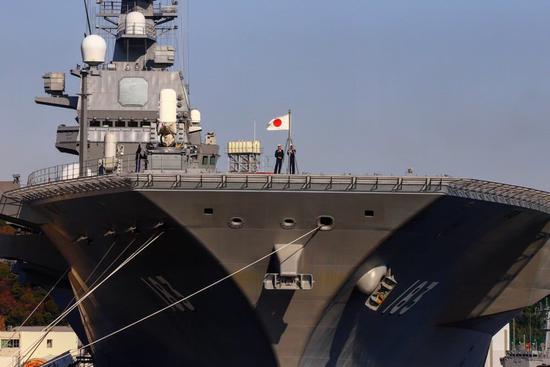
2019年5月14日到16日,再新加坡樟宜展览中心以及海军基地,举办了IMDEX2019第12届新加坡国际海事防务展,这是亚洲最大规模的海事防务展会,不仅有多家防务企业齐聚新加坡,更有20多艘各国舰艇前往展示,我国的054A型护卫舰531号黄埔舰也前往参观。
此次还海事展上最瞩目的两艘军舰当属日本海上自卫队的准航母“出云”号直升机航母(日本称“直升机驱逐舰”),以及澳大利亚海军的“堪培拉”号两栖攻击舰。这两艘都是排水量超过2万吨的大型战舰,而且都具备很强的直升机搭载能力,区别是前者偏重反潜作战,而后者更专注于两栖作战,理论上这两舰都具备搭载垂直起降战机的能力,因此都被称作准航母。
不过在随后的公众开放中,日本这条准航母“出云”号却在关键时候掉链子了,闹了个不大不小的尴尬。作为日本海自的主力战舰,加上服役没几年,在对外展示时就出现这种问题,实在是不应该。
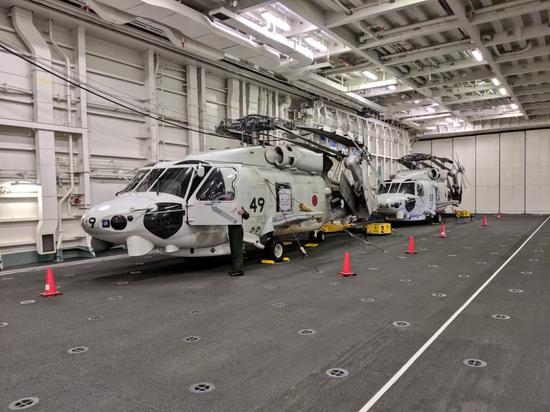
“出云”号机库中的SH-60J反潜直升机。这次“出云”号出丑就是在机库中发生的。
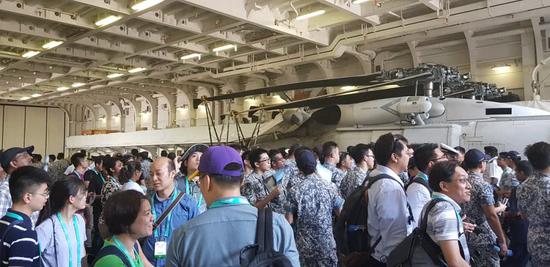
参观“出云”号的新加坡民众,注意其中穿迷彩的是新加坡国防军军人。此次“出云”号开放了一部分机库供人参观,另一部分要准备加班招待会,所以没有开放。
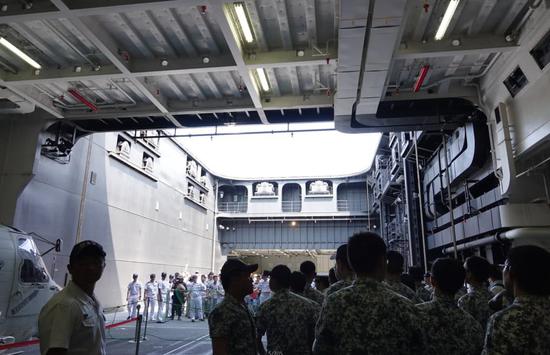
按照流程,下到机库参观后,人流应该跟随引导,称作舰岛左前方的舷内升降机上到飞行甲板进行参观,但在运载一波游客前,“出云”号的一号升降机却出现了故障,动弹不得。
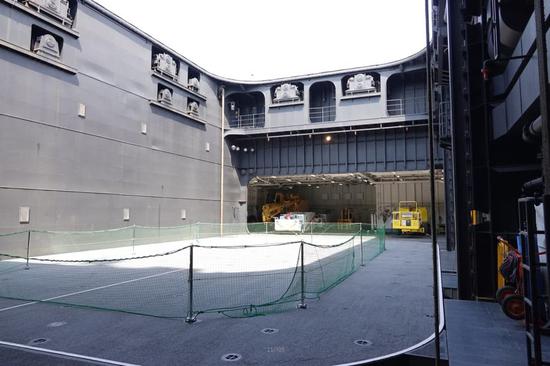
在检查和试图排故失败后,升降机被围上了临时围挡,看来这个故障要等参观结束后花费时间去处理了。
“出云”号有两台升降机,出故障的是在前部的舷内升降机,该升降机占据了一部分机库空降,对于机库内调度有不小的影响,不过“出云”号主要搭载的是体型较小的直升机,所以才如此设计。可以看到这部舷内升降机三面都是舷墙,位于机库的最前方,使用的是铰链式升降系统。
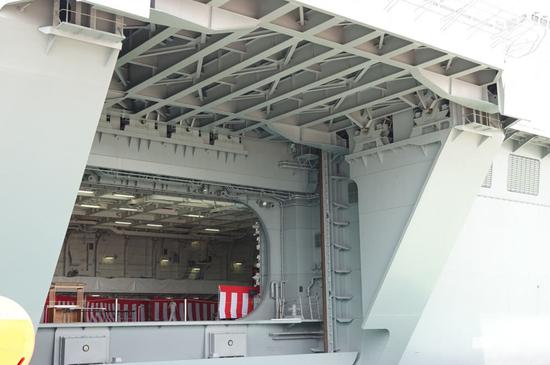
“出云”号的另一台升降机,这是一台舷外升降机,不会占用机库空间,缺点是在高海况情况下使用会出现上浪的情况。当天由于要举办加班招待会,所以这部升降机所处位置并未开放,也没能近距离观察这台升降机。 (作者署名:啮花熊)
Japanese quasi-aircraft carrier went to Singapore to participate in the show, but in the eyes of the public, the chain fell out of the ugly
Japanese quasi-aircraft carrier went to Singapore to participate in the show, but in the eyes of the public, the chain fell out of the ugly
165
From May 14th to 16th, 2019, the Singapore Changi Exhibition Center and the Naval Base held the 12th IMDEX2019 Singapore International Maritime Defence Exhibition, the largest maritime defense exhibition in Asia, with not only a number of defense companies gathering. In Singapore, more than 20 ships from various countries went to the exhibition. China's 054A frigate 531 Huangpu Ship also visited.
The two warships that were most eye-catching at the Maritime Exhibition were the Japanese aircraft self-defense team's quasi-carrier "Izumo" helicopter carrier (known as "helicopter destroyer" in Japan) and the Australian Navy's "Canberra" amphibious assault ship. Both of them are large warships with a displacement of more than 20,000 tons, and they all have strong helicopter carrying capacity. The difference is that the former is more focused on anti-submarine warfare, while the latter is more focused on amphibious operations. In theory, both ships are equipped with vertical take-off and landing. The capabilities of the fighters are therefore called quasi-carriers.
However, in the subsequent public opening, Japan’s quasi-aircraft carrier “Izumo” lost its chain at a critical time, and it made a big embarrassment. As the main battleship of Japan's sea, plus several years of service, this problem occurred when it was displayed to the outside world. It should not be.
SH-60J anti-submarine helicopter in the "Izumo" hangar. This time the "Izumo" ugly happened in the hangar.
Visit the Singaporean people of the "Izumo" and notice that the camouflage is the Singapore Defence Forces. The "Yunyun" number opened a part of the hangar for people to visit, and the other part was to prepare for a overtime reception, so it was not open.
According to the process, after the visit to the hangar, the flow of people should follow the guidance, called the inboard lift on the left front of the island to visit the flight deck, but before carrying a wave of tourists, the No. 1 lift of the "Yiyun" There was a malfunction and it was impossible to move.
After checking and trying to fail the evacuation, the lift was surrounded by a temporary enclosure. It seems that this failure will take time to process after the visit.
There are two elevators in the "Izumo". The failure is the inboard lift at the front. The lift occupies a part of the hangar airborne, which has no small impact on the hangar dispatch, but the "Izumo" is mainly equipped. It is a smaller helicopter, so it is designed like this. It can be seen that the inboard lift is on all three sides of the bulwark, at the forefront of the hangar, using a hinged lifting system.
Another lift of the "Izumo" is an outboard lift that does not occupy the hangar space. The disadvantage is that it will be used in high sea conditions. Due to the overtime reception on the day, the location of the lift was not open and the lift was not closely observed. (Author's signature: Bear)
日本准航母赴新加坡参展 却在众目睽睽下掉链子出丑
日本准航母赴新加坡参展 却在众目睽睽下掉链子出丑
165

2019年5月14日到16日,再新加坡樟宜展览中心以及海军基地,举办了IMDEX2019第12届新加坡国际海事防务展,这是亚洲最大规模的海事防务展会,不仅有多家防务企业齐聚新加坡,更有20多艘各国舰艇前往展示,我国的054A型护卫舰531号黄埔舰也前往参观。
此次还海事展上最瞩目的两艘军舰当属日本海上自卫队的准航母“出云”号直升机航母(日本称“直升机驱逐舰”),以及澳大利亚海军的“堪培拉”号两栖攻击舰。这两艘都是排水量超过2万吨的大型战舰,而且都具备很强的直升机搭载能力,区别是前者偏重反潜作战,而后者更专注于两栖作战,理论上这两舰都具备搭载垂直起降战机的能力,因此都被称作准航母。
不过在随后的公众开放中,日本这条准航母“出云”号却在关键时候掉链子了,闹了个不大不小的尴尬。作为日本海自的主力战舰,加上服役没几年,在对外展示时就出现这种问题,实在是不应该。

“出云”号机库中的SH-60J反潜直升机。这次“出云”号出丑就是在机库中发生的。

参观“出云”号的新加坡民众,注意其中穿迷彩的是新加坡国防军军人。此次“出云”号开放了一部分机库供人参观,另一部分要准备加班招待会,所以没有开放。

按照流程,下到机库参观后,人流应该跟随引导,称作舰岛左前方的舷内升降机上到飞行甲板进行参观,但在运载一波游客前,“出云”号的一号升降机却出现了故障,动弹不得。

在检查和试图排故失败后,升降机被围上了临时围挡,看来这个故障要等参观结束后花费时间去处理了。
“出云”号有两台升降机,出故障的是在前部的舷内升降机,该升降机占据了一部分机库空降,对于机库内调度有不小的影响,不过“出云”号主要搭载的是体型较小的直升机,所以才如此设计。可以看到这部舷内升降机三面都是舷墙,位于机库的最前方,使用的是铰链式升降系统。

“出云”号的另一台升降机,这是一台舷外升降机,不会占用机库空间,缺点是在高海况情况下使用会出现上浪的情况。当天由于要举办加班招待会,所以这部升降机所处位置并未开放,也没能近距离观察这台升降机。 (作者署名:啮花熊)
Japanese quasi-aircraft carrier went to Singapore to participate in the show, but in the eyes of the public, the chain fell out of the ugly
Japanese quasi-aircraft carrier went to Singapore to participate in the show, but in the eyes of the public, the chain fell out of the ugly
165
From May 14th to 16th, 2019, the Singapore Changi Exhibition Center and the Naval Base held the 12th IMDEX2019 Singapore International Maritime Defence Exhibition, the largest maritime defense exhibition in Asia, with not only a number of defense companies gathering. In Singapore, more than 20 ships from various countries went to the exhibition. China's 054A frigate 531 Huangpu Ship also visited.
The two warships that were most eye-catching at the Maritime Exhibition were the Japanese aircraft self-defense team's quasi-carrier "Izumo" helicopter carrier (known as "helicopter destroyer" in Japan) and the Australian Navy's "Canberra" amphibious assault ship. Both of them are large warships with a displacement of more than 20,000 tons, and they all have strong helicopter carrying capacity. The difference is that the former is more focused on anti-submarine warfare, while the latter is more focused on amphibious operations. In theory, both ships are equipped with vertical take-off and landing. The capabilities of the fighters are therefore called quasi-carriers.
However, in the subsequent public opening, Japan’s quasi-aircraft carrier “Izumo” lost its chain at a critical time, and it made a big embarrassment. As the main battleship of Japan's sea, plus several years of service, this problem occurred when it was displayed to the outside world. It should not be.
SH-60J anti-submarine helicopter in the "Izumo" hangar. This time the "Izumo" ugly happened in the hangar.
Visit the Singaporean people of the "Izumo" and notice that the camouflage is the Singapore Defence Forces. The "Yunyun" number opened a part of the hangar for people to visit, and the other part was to prepare for a overtime reception, so it was not open.
According to the process, after the visit to the hangar, the flow of people should follow the guidance, called the inboard lift on the left front of the island to visit the flight deck, but before carrying a wave of tourists, the No. 1 lift of the "Yiyun" There was a malfunction and it was impossible to move.
After checking and trying to fail the evacuation, the lift was surrounded by a temporary enclosure. It seems that this failure will take time to process after the visit.
There are two elevators in the "Izumo". The failure is the inboard lift at the front. The lift occupies a part of the hangar airborne, which has no small impact on the hangar dispatch, but the "Izumo" is mainly equipped. It is a smaller helicopter, so it is designed like this. It can be seen that the inboard lift is on all three sides of the bulwark, at the forefront of the hangar, using a hinged lifting system.
Another lift of the "Izumo" is an outboard lift that does not occupy the hangar space. The disadvantage is that it will be used in high sea conditions. Due to the overtime reception on the day, the location of the lift was not open and the lift was not closely observed. (Author's signature: Bear)


